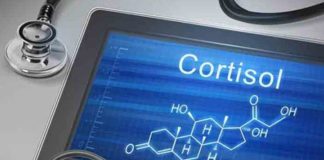Five effective ways to handle work anxiety
Anxiety is a very common disorder today and it increases with the increase in lifestyle imbalances. At office, when you are anxious about some...
Vitamin D accelerates the process of wound healing
According to a new study, vitamin D supplements should be given to patients surviving severe burns as Vitamin D speeds up the healing process;...
Day-long cortisol level consistency may affect your health
When remains at a constant level throughout the day, stress hormone, Cortisol, could lead to some serious health issues like inflammation, obesity and cancer,...
All about illness anxiety disorder!
Illness anxiety disorder is a mental health condition in which, a person feels that he/she has developed some illness, when in reality, there may...
Weight gain after first pregnancy increases risk of diabetes during second...
A recent study indicated that women, who gained weight after their first pregnancy are more prone to develop diabetes during their next pregnancy.
The...
Low levels of testosterone in men linked to less chances of...
According to a latest research, men with low levels of testosterone have less likelihood for the development of prostate cancer. This study was conducted...
Rotavirus helps decrease medical costs by reducing kids’ hospitalization
Routine rotavirus vaccine has significantly lowered the number of diarrhea-related hospitalization cases among young children in the United States, reported a study. The study...
Brain energy consumption in animals similar to that of humans, study...
A new research reported that the human brain's energy use is not unique as thought earlier. The research was published in the Journal of...
Warfarin protects against cancer too, a new study claims!
Warfarin is a drug that is used in heart patients when they suffer a stroke or heart attack. But according to a new study...
Eat healthy now to stay fit in old age
A research suggests that to stay healthy in the old age, one should start a healthy diet right from today.
Basically, an observational study,...
Why many women terminate follow-up treatments after breast cancer surgery
A latest study reported that many patients, who have undergone breast cancer surgery, stop their treatment just after the surgery. The study was led...
FDA approves Zelboraf for rare blood cancer
Erdheim-Chester Disease or polyostotic sclerosing histiocytosis is a rare kind of fatal blood cancer. This is a slow-growing cancer, which initially develops in the...
Taking heartburn medicines on a daily basis makes you more prone...
A review study reported the link between some of the heartburn medicines kidney diseases. The study did not predict cause and effect, but showed...
Strength training can reduce risk of early death
According to a new study, doing strength-based exercise reduces the risk of dying early. The research was conducted by researchers at Sydney University. The...






















